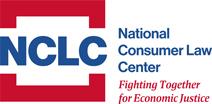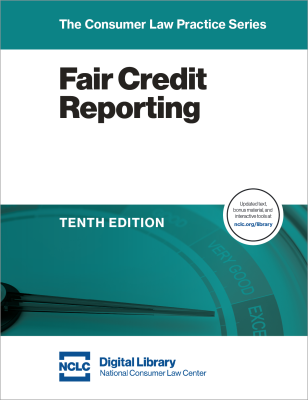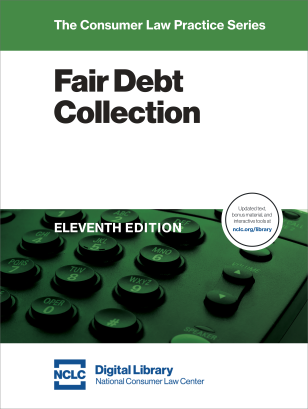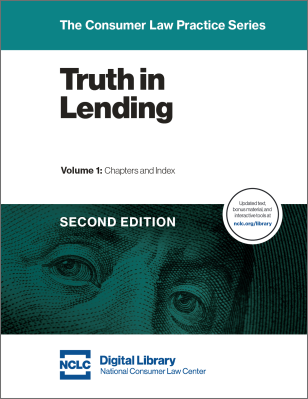(Article Updated May 27, 2025)
On May 12, 2025, the CFPB withdrew 67 of its guidance documents—8 policy statements, 7 interpretative rules, 13 advisory opinions, and 39 other guidance documents. See 90 Fed. Reg. 20,084 (May 12, 2025). Many of these guidance documents have significant utility in consumer litigation involving the FDCPA, FCRA, TILA, ECOA, state UDAP statutes, and other consumer credit laws. Moreover, these guidance documents often address areas of current consumer concern.
This article explains how consumer law practitioners can continue to use these withdrawn interpretations in consumer litigation. The article also explains the CFPB’s justification for the withdrawal and provides a listing of withdrawn guidance documents, organized by consumer law statute, with links for more information. The article also examines the CFPB’s May 15 rescission of its now-withdrawn interpretation on state enforcement of the Consumer Financial Protection Act, with a critique of that rescission.
CFPB Justification for Withdrawing the 67 Guidance Documents
The CFPB’s overall stated justification for withdrawing the 67 guidance documents is the current CFPB’s opposition to issuing any guidance document that is not in the form of a regulation, viewing sub-regulatory guidance as burdensome to industry. Nothing in the notice of withdrawal indicated any critique of specific interpretations.
The CFPB characterized the mass withdrawal of guidance documents not as a rejection as to the content of specific guidance documents, but as a stay of their use in CFPB enforcement while the CFPB evaluates each guidance document to see if it should be retained. The CFPB offered three justifications for the mass withdrawal:
- The CFPB now has an overall policy against offering guidance to the industry, and will offer guidance documents only to reduce, not increase compliance burdens.
- The CFPB is reducing its enforcement activities, largely leaving enforcement to others, so there is less need to offer guidance to the industry.
- Industry’s reliance on now withdrawn guidance documents is not a concern, in part because the CFPB will not be enforcing requirements found in the guidance documents and because they are only informal interpretations.
None of these justifications go to the merits of individual guidance documents. The withdrawal is a stay pending review rather than a repudiation of individual guidance documents, although at some point the CFPB will review the guidance documents to determine if they are consistent with the applicable statutes and rules. The CFPB statement withdrawing the 67 guidance documents states:
To effectuate the Bureau’s new policy preference, the Bureau is withdrawing all guidance documents to afford staff an opportunity to review and consider (1) whether the guidance is statutorily prescribed, (2) whether the interpretation therein is consistent with the relevant statute or regulation, and (3) whether it imposes or decreases compliance burdens. The alternative—leaving guidance documents in place while the Bureau reviews each interpretation to determine its net effect on compliance burdens—risks imposing unnecessary and illegal compliance burdens in the interim. The Bureau rejects that alternative. While some guidance might be reissued in the future, the Bureau does not intend to prioritize the enforcement of such guidance against parties that do not conform to the guidance during the pendency of any withdrawal.
Practice Implications of CFPB Withdrawal
1. No changes to underlying statutes, regulations, or official interpretations of regulations. The 69 withdrawn guidance documents are sub-regulatory documents, interpreting consumer statutes and regulations. There is no change to the underlying statutes, regulations, or even official interpretations of regulations. For example, the Official Interpretations to TILA Reg. Z, FDCPA Reg. F, ECOA Reg. B, and EFTA Reg. E all remain unchanged. The regulations and their official interpretations were promulgated through notice and comment procedures and cannot be easily withdrawn.
2. The guidance documents can easily be restored. The CFPB accomplished the mass withdrawal of the guidance documents with no APA notice and comment procedures, and the original guidance documents also were largely issued without those procedures. The current acting director or a new director in this administration or the next administration can just as easily restore these guidance documents. The notice of the withdrawal even indicates “While some guidance might be reissued in the future….”
3. No negative connotations as to the content of specific guidance. The CFPB notice of mass withdrawal indicates a preference for the CFPB not providing guidance at all, but there is no indication in the notice that any specific guidance document is faulty or should be rewritten. The change relates to the value of offering guidance and not to the analysis found in any of the guidance documents.
For example, a court reviewing a guidance document might find it helpful in interpreting a consumer statute or rule. That the relevant guidance document has been withdrawn does not change the fact that the court finds the analysis helpful, and the guidance’s withdrawal does not limit the precedential value of the court’s ruling. Nor is there any indication that the CFPB is suggesting that the law is different than what is spelled out in each guidance document.
4. The logic of each guidance document outlives any withdrawal. Guidance documents do not have the force of law and instead offer advice as to how the then-current CFPB interpreted how existing statutes and regulations applied to certain industry practices. See 86 Fed. Reg. 9261 (Feb. 12, 2021). Their chief value is not in stating which practices may violate a statute or regulation, but in the analysis as to why the practice violates a statute or regulation. One can expect that analysis to be well-reasoned, based on CFPB’s expertise as to the underlying statutes and regulations, and with its unique knowledge of the nature of the practices to which each guidance document relates.
As a result, there is a good chance the guidance document will offer superior analysis as to why certain practices may run afoul of existing law. But the guidance document is not a statute or regulation, and its value is based on the thoroughness and accuracy of the analysis of the law, and not primarily on its conclusion.
That the guidance document has been withdrawn does not change the analysis found in the guidance or and the nature of the current withdrawals does not call into question that analysis. Standing on its own, the analysis is just as persuasive (or non-persuasive) as when the analysis was embedded in an official CFPB guidance document. As a result, there is a good chance the guidance document will offer superior analysis as to why certain practices may run afoul of existing law. But the guidance document is not a statute or regulation, and its value is based on the thoroughness and accuracy of the analysis of the law, and not primarily on its conclusion.
As explained in this article, what matters to a court is the “best reading” of the law, not so much the name of the party forwarding that interpretation.
Consumer attorneys can thus adopt the analysis, adapt it to a particular case, supplement it with additional analysis, or revise it as necessary. But whether the attorney cites to a guidance document or not is not central to the guidance’s use—it is the guidance’s logic that is its value. Of course, if the CFPB’s imprimatur will be helpful for a case, the attorney can cite to the original source, noting it has been withdrawn for further review.
5. Limited court deference to withdrawal. As set out in #4, above, the value of a CFPB guidance document is in the underlying analysis, and not just that the CFPB has reached that conclusion. Courts will not blindly follow CFPB guidance, even guidance that is not withdrawn. In applying the law to the facts of a particular case, the court will independently evaluate the CFPB’s analysis for its persuasiveness and thoroughness and be less concerned about the CFPB’s current position.
The fact that the federal agency with rulemaking authority and expertise over the subject matter has issued a guidance document will have value before courts. That value does not greatly change now that the CFPB has withdrawn the guidance document, where that withdrawal is more an indication of the current CFPB’s skepticism as to providing any form of guidance. This does not change the fact that a guidance document was initially issued by the expert agency responsible for interpreting and issuing regulations for the relevant statute, and, in many cases, after thorough analysis and even notice and comment. The notice of mass withdrawal does not cast into question the expertise of the agency when issuing the guidance and only questions the necessity of issuing guidance.
For example, courts still occasionally cite the FTC’s FCRA Staff Commentary despite its withdrawal when authority over the FCRA was transferred in 2011 from the FTC to the CFPB. See, e.g., Midland Funding, L.L.C. v. Johnson, 581 U.S. 224, 233 (2017). See generally NCLC’s Fair Credit Reporting § 1.3.3.2.1.
The CFPB in January published a Compendium of Recent Guidance, which explained that the guidance issued by the CFPB represented the best legal reasoning and fact-based thinking in the agency.
The attached guidance documents reflect the considered judgment, reasoning, knowledge, and expertise of the CFPB. … [Loper Bright Enterprises v. Raimondo, 144 S. Ct. 2244 (2024)] indicated that “courts may—as they have from the start—seek aid from the interpretations of those responsible for implementing particular statutes.” Id. at 2262. In that spirit, our hope is that these CFPB guidance documents implementing the federal consumer financial laws prove useful to courts in their interpretation of those laws, as well as to the various enforcers of them. Indeed, in many instances, courts have agreed with interpretations articulated in CFPB guidance documents. We believe that the interpretations set forth in these documents reflect the best reading of the federal consumer financial laws and that the reasoning provided therein will therefore prove to be durable.
[Emphasis added, footnotes omitted]
Whither the CFPB Complaint Database?
The CFPB has a large database of consumer complaints open to the public and with extensive search capabilities. As of May 13, 2025, the database is still available on the CFPB website. The database has proven helpful for consumer litigants, consumer advocates, state and federal officials, researchers, and others in any number of ways.
Nevertheless, the mass withdrawal of guidance documents included the withdrawal of three early CFPB guidance documents explaining how it was creating the database. See Disclosure of Consumer Complaint Narrative Data, 80 Fed. Reg. 15,572 (Mar. 24, 2015); Disclosure of Consumer Complaint Data, 78 Fed. Reg. 21,218 (Apr. 10, 2013); Disclosure of Certain Credit Card Complaint Data, 77 Fed. Reg. 37558 (June 22, 2012). Does their withdrawal mean that the CFPB will stop posting new complaints and may even take down the database completely?
12 U.S.C. § 5511(c)(2) lists as a primary function of the CFPB “collecting, investigating, and responding to consumer complaints.” Thus, the CFPB should continue to receive and process consumer complaints. In addition, 12 U.S.C. § 5493(b)(3)(D) requires that the CFPB “share consumer complaint information with prudential regulators, the Federal Trade Commission, other Federal agencies, and State agencies, subject to the standards applicable to Federal agencies for protection of the confidentiality of personally identifiable information and for data security and integrity.”
As of May 13, the CFPB complaint database is still available and searchable online at the CFPB’s website. The Internet Archive periodically backs up the CFPB complaint database, which you can download as a large zip file. If the CFPB complaint database were to be taken down in the future, archived versions of the database will not contain complaints added after the date that the database was last archived. Information about new complaints received and processed by the CFPB in accordance with their statutory obligation will still be subject to Freedom of Information Act requests.
Other sources of consumer complaints include the FTC, state attorneys general or other state agencies, and private entities such as the Better Business Bureau. Unfortunately, not all these complaints are published online, and what information there is about the complaints may be limited to categories of complaints and not personal narratives. One may need to file a public record request to access any information about complaints filed with the FTC or a state regulator.
Withdrawn Guidance by Federal Statute
This section provides a list of the 67 withdrawn guidance documents organized by the applicable federal statute. Also listed are links for further discussion of the guidance documents found in one or more of NCLC’s treatises. There are 13 guidance documents relating to the Fair Credit Reporting Act, six to the Fair Debt Collection Practices Act, ten to Truth in Lending, eight to the Equal Credit Opportunity Act, four to the Electronic Funds Transfer Act and remittances, two to the Real Estate Procedures Settlement Act, and one to the Interstate Land Sales Act. Sixteen guidance documents concern the CFPB’s UDAAP standards and 12 concern other aspects of the Consumer Financial Protection Act,
—Fair Credit Reporting Act
- The Fair Credit Reporting Act’s Limited Preemption of State Laws, 87 Fed. Reg. 41,042 (July 11, 2022). See NCLC’s Fair Credit Reporting § 10.7.3.3.3.
- Fair Credit Reporting; File Disclosure, 89 Fed. Reg. 4167 (Jan. 23, 2024). See NCLC’s Fair Credit Reporting §§ 3.5.2.4, 3.6.1.2, 3.6.4.2.
- Fair Credit Reporting; Background Screening, 89 Fed. Reg. 4171 (Jan. 23, 2024). See NCLC’s Fair Credit Reporting §§ 4.3.5.2, 4.3.8, 4.4.6.5.2, 4.4.6.9.4, 5.2.2.3, 5.2.3.3, 5.2.3.4.2, 5.2.3.8.2, 5.2.3.8.3.
- Fair Credit Reporting; Permissible Purposes for Furnishing, Using, and Obtaining Consumer Reports, 87 Fed. Reg. 41,243 (July 12, 2022). See NCLC’s Fair Credit Reporting §§ 1.3.3.2.2a, 4.2.4.1.3, 7.1.2.1, 7.1.2.2, 7.2.4.1.1, 7.5.2a, 7.7.1.
- Fair Credit Reporting; Name-Only Matching Procedures, 86 Fed. Reg. 62,468 (Nov. 10, 2021). See NCLC’s Fair Credit Reporting §§ 1.3.3.2.2a, 4.2.4.1.3, 4.3.3.1, 4.3.3.4.
- Consumer Financial Protection Circular 2024-06: Background Dossiers and Algorithmic Scores for Hiring, Promotion, and Other Employment Decisions, 89 Fed. Reg. 88,875 (Nov. 12, 2024).
- Consumer Financial Protection Circular 2022-07: Reasonable Investigation of Consumer Reporting Disputes, 87 Fed. Reg. 71,507 (Nov. 23, 2022). See NCLC’s Fair Credit Reporting §§ 1.3.3.2.2a, 4.5.2.3, 4.5.4.2.2, 6.10.2.3, 6.10.3.2, 6.10.4.1, 6.10.4.2.3.
- Consumer Financial Protection Circular 2022-05: Debt Collection and Consumer Reporting Practices Involving Invalid Nursing Home Debts, 87 Fed. Reg. 57,375 (Sept. 20, 2022). See NCLC’s Fair Debt Collection §§ 3.4.4.4, 4.6.2, 7.4.13a.4; NCLC’s Collection Actions § 9.6.8; Fair Credit Reporting § 4.5.3.4.6.
- Bulletin 2022-01: Medical Debt Collection and Consumer Reporting Requirements in Connection with the No Surprises Act, 87 Fed. Reg. 3025 (Jan. 20, 2022). See NCLC’s Fair Debt Collection § 7.4.13a.3; NCLC’s Collection Actions §§ 9.1.1, 9.3.8.1.1; NCLC’s Fair Credit Reporting § 4.5.3.4.6.
- Enforcement Compliance Bulletin 2021-03: Consumer Reporting of Rental Information, 86 Fed. Reg. 35,595 (July 7, 2021).
- Bulletin 2014-01 re: FCRA Requirement That Furnishers Conduct Investigations (Feb. 27, 2014), https://www.consumerfinance.gov/compliance/supervisory-guidance/bulletin-fcra-requirement-furnishers-conduct-investigations/. See NCLC’s Fair Credit Reporting §§ 4.4.6.9.2, 4.5.5.2, 6.4.2.7, 6.10.4.2.2.
- Bulletin 2013-09 re: the FCRA’s Requirement to Investigate Disputes And Review “All Relevant” Information (Sept. 4, 2013), https://www.consumerfinance.gov/compliance/supervisory-guidance/bulletin-fcra-requirement-investigate-disputes/. See NCLC’s Fair Credit Reporting §§ 4.5.4.2.2, 6.10.3.2, 6.10.4.2.1.
- Bulletin 2012-09 re: FCRA’s Streamlined Process Requirement for Consumers to Obtain Free Annual Reports (Nov. 29, 2012), https://www.consumerfinance.gov/compliance/supervisory-guidance/bulletin-fcra process-requirement-consumers/. See NCLC’s Fair Credit Reporting §§ 2.6.2.1, 3.3.2.4.
—Fair Debt Collection Practices Act
- Debt Collection Practices (Regulation F); Deceptive and Unfair Collection of Medical Debt, 89 Fed. Reg. 80,715 (Oct. 4, 2024). See NCLC’s Fair Debt Collection § 7.4.13a.2, Appx B.
- Fair Debt Collection Practices Act (Regulation F); Time-Barred Debt, 88 Fed. Reg. 26,475 (May 1, 2023). See NCLC’s Fair Debt Collection §§ 7.4.9.3, 7.4.9.4, Appx. B.
- Debt Collection Practices (Regulation F); Pay-to-Pay Fees, 87 Fed. Reg. 39,733 (July 5, 2022). See NCLC’s Fair Debt Collection §§ 3.4.4.3, 8.3.1, 8.3.7, Appx. B.
- Consumer Financial Protection Circular 2022-05: Debt Collection and Consumer Reporting Practices Involving Invalid Nursing Home Debts, 87 Fed. Reg. 57,375 (Sept. 20, 2022). See NCLC’s Fair Debt Collection §§ 3.4.4.4, 4.6.2, 7.13a.4, Appx. B; NCLC’s Collection Actions § 9.6.8; NCLC’s Fair Credit Reporting § 4.5.3.4.6.
- Bulletin 2022-01: Medical Debt Collection and Consumer Reporting Requirements in Connection with the No Surprises Act, 87 Fed. Reg. 3025 (Jan. 20, 2022). See NCLC’s Fair Debt Collection §§ 7.4.13a.3, Appx. B; NCLC’s Collection Actions §§ 9.1.1, 9.3.8.1.1; NCLC’s Fair Credit Reporting § 4.5.3.4.6.
- Bulletin 2015-07 re: In-Person Collection of Consumer Debt (Dec. 16, 2015), https://www.consumerfinance.gov/compliance/supervisory-guidance/bulletin-personal-collection-consumer-debt/. See NCLC’s Fair Debt Collection § 16.3.7, Appx. B.
—Truth in Lending Act
- Truth in Lending: Use of Digital User Accounts to Access Buy Now, Pay Later Loans, 89 Fed. Reg. 47,068 (May 31, 2024). See NCLC’s Consumer Credit Regulation § 11.7a.3.3.
- Bulletin Clarifying Mortgage Lending Rules to Assist Surviving Family Members (July 8, 2014), https://www.consumerfinance.gov/compliance/supervisory-guidance/bulletin-mortgage-lending-rules-surviving-family-members/. See NCLC’s Truth in Lending § 9.3.3.2.1.
- Truth in Lending (Regulation Z); Consumer Protections for Home Sales Financed Under Contracts for Deed, 89 Fed. Reg. 68,086 (Aug. 23, 2024). See NCLC’s Home Foreclosures § 8.8.2.1; NCLC’s Mortgage Servicing and Loan Modifications § 11.9.2.1; NCLC’s Consumer and Worker Arbitration Provisions § 7.2.1; NCLC’s Credit Discrimination § 11.5.3.2.1; NCLC’s Truth in Lending § 9.3.3.3.2.
- Truth in Lending (Regulation Z); Earned Wage Access Programs, 85 Fed. Reg. 79,404 (Dec. 10, 2020), already rescinded prior to its May 12, 2025, withdrawal at 90 Fed. Reg. 3622 (Jan. 15, 2025). The May 12, 2025, notice also withdraws the January 15, 2025, rescission. See NCLC’s Consumer Credit Regulation §§ 9.10.4.1, 9.10.4.3.1; NCLC’s Truth in Lending §§ 2.2.2.2, 2.8.10.3, 3.6.4.1, 3.6.4.4, 3.7.3.5.
- Truth in Lending (Regulation Z); Private Education Loans, 85 Fed. Reg. 79,400 (Dec. 10, 2020).
- Policy Guidance on Supervisory and Enforcement Priorities Regarding Early Compliance with the 2016 Amendments to the 2013 Mortgage Rules Under the Real Estate Settlement Procedures Act (Regulation X) and the Truth in Lending Act (Regulation Z), 82 Fed. Reg. 29,713 (June 30, 2017).
- Bulletin 2014-02 re: Marketing Of Credit Card Promotional APR Offers (Sept. 3, 2014), https://www.consumerfinance.gov/compliance/supervisory-guidance/bulletin-marketing-credit-card-promotional-apr-offers/. See NCLC’s Federal Deception & Abuse Law §§ 3.2.4.4.6, 3.4.5; NCLC’s Truth in Lending §§ 6.4.6.1, 6.5.3.6, 6.6.2.2, 6.6.7.1, 6.7.11.1, 6.8.3.3.3; NCLC’s Unfair and Deceptive Acts and Practices § 6.8.1.3.
- Bulletin 2012-06 re: Marketing of Credit Card Add-On Products (June 27, 2011), https://www.consumerfinance.gov/compliance/supervisory-guidance/bulletin-marketing-credit-card-add-on-products/. See NCLC’s Federal Deception & Abuse Law § 3.4.4; NCLC’s Consumer Credit Regulation § 6.2.4.3.
- Bulletin 2012-02 re: the Payment of Compensation to Loan Originators (April 2, 2012), https://www.consumerfinance.gov/compliance/supervisory-guidance/bulletin-payment-compensation-loan-originators/, superseded by Reg. Z § 1026.36(d)(1)(i). See NCLC’s Truth in Lending § 9.3.2.6.
—Electronic Fund Transfer Act and Remittances
- Consumer Financial Protection Circular 2024-02: Deceptive Marketing Practices About the Speed or Cost of Sending a Remittance Transfer, 89 Fed. Reg. 27,357 (Apr. 17, 2024). See NCLC’s Consumer Banking and Payments Law §§ 9.2.1.2, 9.2.3.2, 9.2.7, 9.2.8.1.
- Bulletin 2012-08 re: Implementation of the Remittance Rule (Regulation E, Subpart B) (Nov. 27, 2012), https://www.consumerfinance.gov/compliance/supervisory-guidance/bulletin-implementation-remittance-rule/.
- Statement on Supervisory and Enforcement Practices Regarding the Remittance Rule in Light of the COVID-19 Pandemic (Apr. 10, 2020), https://files.consumerfinance.gov/f/documents/cfpb_policy-statement_remittances-covid-19_2020-04.pdf.
- Consumer Financial Protection Circular 2024-05: Improper Overdraft Opt-in Practices, 89 Fed. Reg. 80,075 (Oct. 2, 2024) (Can a financial institution violate the law if there is no proof that it has obtained consumers’ affirmative consent before levying overdraft fees for ATM and onetime debit card transactions?).
—Equal Credit Opportunity Act
- Equal Credit Opportunity (Regulation B); Discrimination on the Bases of Sexual Orientation and Gender Identity, 86 Fed. Reg. 14,363 (Mar. 16, 2021). See NCLC’s Credit Discrimination § 3.3.4.3.
- Equal Credit Opportunity (Regulation B); Revocations or Unfavorable Changes to the Terms of Existing Credit Arrangements, 87 Fed. Reg. 30,097 (May 18, 2022). See NCLC’s Credit Discrimination §§ 9.2.3, 9.2.4.
- Consumer Financial Protection Circular 2022-03: Adverse Action Notification Requirements in Connection with Credit Decisions Based on Complex Algorithms, 87 Fed. Reg. 35,864 (June 14, 2022). See NCLC’s Credit Discrimination § 10.5.4.2.1.
- Bulletin 2015-02 re: Section 8 Housing Choice Voucher Homeownership Program (May 11, 2015), https://www.consumerfinance.gov/compliance/supervisory-guidance/bulletin-section-8-housing-choice-voucher-homeownership-program/. See NCLC’s Mortgage Lending § 4.7.
- Bulletin 2013-01 re: Indirect Auto Lending and Compliance with the Equal Credit Opportunity Act (Mar. 21, 2013), https://www.consumerfinance.gov/compliance/supervisory-guidance/bulletin-indirect-auto-lending-compliance/. See NCLC’s Credit Discrimination §§ 2.2.5.4, 8.6.3.
- Bulletin 2012-06 re: Marketing of Credit Card Add-On Products (June 27, 2011), https://www.consumerfinance.gov/compliance/supervisory-guidance/bulletin-marketing-credit-card-add-on-products/. See NCLC’s Federal Deception & Abuse Law § 3.4.4; NCLC’s Consumer Credit Regulation § 6.2.4.3.
- Bulletin 2012-04 re: Lending Discrimination. This bulletin is no longer on the CFPB website, but NCLC is making it publicly available at https://library.nclc.org/companion-material/cfpb-bulletin-2012-04-fair-lending-apr-18-2012.
- Statement on Enforcement and Supervisory Practices Relating to the Small Business Lending Rule Under the Equal Credit Opportunity Act and Regulation B, 88 Fed. Reg. 34,833 (May 31, 2023). See NCLC’s Credit Discrimination § 2.2.6.4.
—Real Estate Settlement Procedures Act
- Bulletin 2021-02: Supervision and Enforcement Priorities Regarding Housing Insecurity, 86 Fed. Reg. 17,897 (Apr. 7, 2021) (relating to COVID).
- Policy Guidance on Supervisory and Enforcement Priorities Regarding Early Compliance with the 2016 Amendments to the 2013 Mortgage Rules Under the Real Estate Settlement Procedures Act (Regulation X) and the Truth in Lending Act (Regulation Z), 82 Fed. Reg. 29,713 (June 30, 2017).
—Interstate Land Sales Act
- Bulletin 11-2 re: the Interstate Land Sales Full Disclosure Act, https://files.consumerfinance.gov/f/201107_CFPB_Guidance_ILS-Communications-With-CFPB-Update-July-202012.pdf/.
—CFPB Standards on Unfair, Deceptive and Abusive Acts and Practices
- Consumer Financial Protection Circular 2024-03: Unlawful and Unenforceable Contract Terms and Conditions, 89 Fed. Reg. 51,955 (June 21, 2024).
- Consumer Financial Protection Circular 2024-01: Preferencing and Steering Practices by Digital Intermediaries for Consumer Financial Products or Services, 89 Fed. Reg. 17,706 (Mar. 12, 2024). See NCLC’s Unfair and Deceptive Acts and Practices § 6.8.3.2.
- Consumer Financial Protection Circular 2023-02: Reopening Deposit Accounts That Consumers Previously Closed, 88 Fed. Reg. 33,545 (May 24, 2023). See NCLC’s Consumer Banking and Payments Law §§ 2.6.2.3, 7.4.1.2.
- Consumer Financial Protection Circular 2023-01: Unlawful Negative Option Marketing Practices, 88 Fed. Reg. 5727 (Jan. 30, 2023).
- Consumer Financial Protection Circular 2022-06: Unanticipated Overdraft Fee Assessment Practices, 87 Fed. Reg. 66,935 (Nov. 7, 2022). See NCLC’s Consumer Banking and Payments Law §§ 5.11.2.1, 5.11.2.2; NCLC’s Federal Deception & Abuse Law § 3.4.10.
- Consumer Financial Protection Circular 2022-04: Insufficient Data Protection or Security for Sensitive Consumer Information, 87 Fed. Reg. 54,346 (Sept. 6, 2022).
- Consumer Financial Protection Circular 2022-02: Deceptive Representations Involving the FDIC’s Name or Logo or Deposit Insurance, 87 Fed. Reg. 35,866 (June 14, 2022).
- Bulletin 2023-01: Unfair Billing and Collection Practices After Bankruptcy Discharges Certain Student Loan Debts, 88 Fed. Reg. 17,366 (Mar. 23, 2023). See NCLC’s Federal Deception & Abuse Law § 3.4.11; NCLC’s Collection Actions § 12.4.10; NCLC’s Fair Debt Collection § 11.8.4.
- Bulletin 2022-06: Unfair Returned Deposited Item Fee Assessment Practices, 87 Fed. Reg. 66,940 (Nov. 7, 2022). See NCLC’s Federal Deception & Abuse Law § 3.4.10.
- Bulletin 2022-05: Unfair and Deceptive Acts or Practices That Impede Consumer Reviews, 87 Fed. Reg. 17,143 (Mar. 28, 2022). See NCLC’s Federal Deception & Abuse Law §§ 3.2.2; 3.4.9; NCLC’s Unfair and Deceptive Acts and Practices § 5.6.3.3.
- Bulletin 2022-04: Mitigating Harm from Repossession of Automobiles, 87 Fed. Reg. 11,951 (Mar. 3, 2022). See NCLC’s Repossessions § 13.4.3.1; NCLC’s Federal Deception & Abuse Law § 3.4.8.
- Bulletin 2022-03: Servicer Responsibilities in Public Service Loan Forgiveness Communications, 87 Fed. Reg. 11,286 (Mar. 1, 2022). See NCLC’s Federal Deception & Abuse Law § 3.4.7.
- Bulletin 2014-02 re: Marketing of Credit Card Promotional APR Offers (Sept. 3, 2014), https://www.consumerfinance.gov/compliance/supervisory-guidance/bulletin-marketing-credit-card-promotional-apr-offers/. See NCLC’s Federal Deception & Abuse Law §§ 3.2.4.4.6, 3.4.5; NCLC’s Truth in Lending §§ 6.4.6.1, 6.5.3.6, 6.6.2.2, 6.6.7.1, 6.7.11.1, 6.8.3.3.3; NCLC’s Unfair and Deceptive Acts and Practices § 6.8.1.3.
- Bulletin 2013-07 re: Prohibition of Unfair, Deceptive, or Abusive Acts or Practices in the Collection of Consumer Debts (July 10, 2013), https://files.consumerfinance.gov/f/201307_cfpb_bulletin_unfair-deceptive-abusive-practices.pdf [archive.org]. See NCLC’s Federal Deception & Abuse Law § 3.4.2; NCLC’s Fair Debt Collection §§ 3.4.4.5, 16.3.4, 16.3.5, 16.3.7; NCLC’s Unfair and Deceptive Acts and Practices § 6.13.3; NCLC’s Repossessions § 13.4.3.1.
- Bulletin 2012-06 re: Marketing of Credit Card Add-On Products (June 27, 2011), https://www.consumerfinance.gov/compliance/supervisory-guidance/bulletin-marketing-credit-card-add-on-products/. See NCLC’s Federal Deception & Abuse Law § 3.4.4; NCLC’s Consumer Credit Regulation § 6.2.4.3.
- Statement of Policy Regarding Prohibition on Abusive Acts or Practices, 88 Fed. Reg. 21,883 (Apr. 12, 2023). See NCLC’s Federal Deception & Abuse Law § 3.2.4.7.
—Other Aspects of the Consumer Financial Protection Act and the CFPB
- Limited Applicability of Consumer Financial Protection Act’s “Time or Space” Exception to Digital Marketers, 87 Fed. Reg. 50,556 (Aug. 17, 2022) (“digital marketing providers that are involved in the identification or selection of prospective customers or the selection or placement of content to affect consumer engagement … are typically service providers under the CFPA).
- Authority of States to Enforce the Consumer Financial Protection Act of 2010, 87 Fed. Reg. 31,940 (May 26, 2022). On May 15 2025, the CFPB rescinded the now-withdrawn interpretation, this time including analysis. Authority of States to Enforce the Consumer Financial Protection Act of 2010, 90 Fed. Reg. 20,565 (May 15, 2025). For the limited value of that analysis, see the discussion at the end of this article. For even more detail, see NCLC’s Federal Deception & Abuse Law § 3.9.
- Examinations for Risks to Active-Duty Servicemembers and Their Covered Dependents, 86 Fed. Reg. 32,723 (June 23, 2021) (CFPB authority to conduct examinations).
- Consumer Information Requests to Large Banks and Credit Unions, 88 Fed. Reg. 71,279 (Oct. 16, 2023) (CFPA § 1034(c) requiring large banks and credit unions to comply in a timely manner with consumer requests for information concerning their accounts). See NCLC’s Consumer Banking and Payments Law §§ 2.1.3.3, 2.5.3, 7.8.3.1, 7.8.3.3, 7.8.7.
- Consumer Financial Protection Circular 2024-04: Whistleblower Protections Under CFPA Section 1057, 89 Fed. Reg. 65,170 (Aug. 9, 2024).
- Consumer Financial Protection Circular 2022-01: System of Consumer Financial Protection Circulars to Agencies Enforcing Federal Consumer Financial Law, 87 Fed. Reg. 35,868 (June 14, 2022).
- Bulletin 2016-03: Detecting and Preventing Consumer Harm from Production Incentives, 82 Fed. Reg. 5541 (Jan. 18, 2017).
- Policy Statement on No Action Letters, 90 Fed. Reg. 1970 (Jan. 10, 2025).
- Policy Statement on Compliance Assistance Sandbox Approvals, 90 Fed. Reg. 1974 (Jan. 10, 2025).
- Disclosure of Consumer Complaint Narrative Data, 80 Fed. Reg. 15,572 (Mar. 24, 2015).
- Disclosure of Consumer Complaint Data, 78 Fed. Reg. 21,218 (Apr. 10, 2013).
- Disclosure of Certain Credit Card Complaint Data, 77 Fed. Reg. 37,558 (June 22, 2012).
—2025 Rescission of 2022 CFPB Interpretation on State CFPA Enforcement
As described above, On May 12 the CFPB withdrew its 2022 interpretation on state enforcement of the Consumer Financial Protection Act (CFPA), without any analysis of that interpretation. But on May 15, the CFPB rescinded that now-withdrawn interpretation, this time with analysis on why it was disputing the 2022 interpretation in three regards. Authority of States to Enforce the Consumer Financial Protection Act of 2010, 90 Fed. Reg. 20,565 (May 15, 2025).
Since CFPB interpretations do not have the same force as a regulation, the impact on a court of either the 2022 interpretation or its 2025 rescission rests primarily on the persuasiveness of the analysis and not whether the CFPB issued the guidance. On this basis, the 2025 rescission is sorely lacking on all three points it seeks to dispute with the 2022 interpretation.
First, the 2025 rescission agrees that states can enforce violations of the CFPA but attempts to limit that to violations of the CFPA provision at 12 U.S.C. § 5536(a)(1)(B) (UDAAP), but not at 12 U.S.C. § 5536(a)(1)(A) (eighteen enumerated federal consumer finance protection statutes listed at 12 U.S.C. § 5481(12)). The 2022 interpretation clearly has the better view that both subsections are part of the CFPA, and states can thus use the CFPA to enforce the enumerated statutes. For example, states, via the CFPA, can enforce the Fair Debt Collection Practices Act (FDCPA), even though the FDCPA does not otherwise provide for state enforcement. For more detail, see NCLC’s Federal Deception & Abuse Law § 3.9.2.
Second, The CFPA excludes the CFPB and its director from enforcing the CFPA against certain businesses otherwise covered by the CFPA. The CFPA has no provision containing any exclusion for state enforcement of entities within the scope of the CFPA. This is not surprising because a state attorney general has broad enforcement authority for activity within its state. But the 2025 rescission seeks to rewrite the CFPA because it views as “important” limits on states’ enforcement authority. However, the CFPB’s 2025 view of what Congress should do is not relevant to what Congress in fact did.
There is one explicit statutory limit on state enforcement of the CFPA—that states cannot use their CFPA authority to sue national banks and federal savings associations for violations of the UDAAP statutory provision or the enumerated statutes, but can only sue for rule violations. 12 U.S.C. § 5552(a). But the enumerated statutes typically have extensive regulations, so state attorneys general can use their CFPA authority to sue national banks for violations of those regulations. For more detail, see NCLC’s Federal Deception & Abuse Law § 3.9.3.
Third, the 2022 interpretation agrees with the Third Circuit’s holding in Pennsylvania v. Navient Corp., 967 F.3d 273, 287 (3d Cir. 2020), that states can bring their own CFPA actions concurrently with the CFPB against the same defendant. The 2025 rescission rejects this view because “[i]t is the policy of the Bureau to reduce regulatory and compliance burdens, and to eliminate wasteful, duplicative, and unnecessary regulatory and enforcement activity.” However, the nature of the CFPB’s present enforcement policy is irrelevant to the statutory authority Congress granted to the states.
Even more telling, the 2025 interpretive rule does not even cite to the Third Circuit decision and certainly does not try to distinguish it, which raises the question whether the CFPB even considered the most significant legal precedent on the issue. The Third Circuit decision is binding on all courts in the Third Circuit and should be persuasive to courts outside the Third Circuit. For more detail, see NCLC’s Federal Deception & Abuse Law § 3.9.5.




